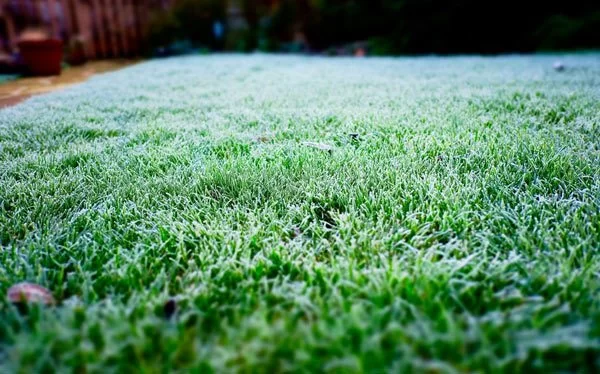
- Why Winterizing Your Lawn Is Important
- Steps to Prepare Your Lawn for Winter
- Common Mistakes to Avoid When Winterizing Your Lawn
- Tips for Maintaining Lawn Health Throughout Winter
- How Lawn Care Services Can Help with Winter Lawn Preparation
Why Winterizing Your Lawn Is Important
As the colder months approach, many homeowners often overlook the importance of preparing their lawn for winter. However, proper lawn care in the fall and winter can greatly impact the health of your grass in the spring. Winterizing your lawn helps protect it from the harsh conditions that come with the colder temperatures, ensuring it survives the season and thrives once the weather warms up again.
When you winterize your lawn, you’re essentially setting it up for success. A well-prepared lawn will grow stronger, greener, and more resistant to pests and diseases once spring arrives. Taking the right steps to care for your lawn before the first frost can save you time, effort, and money in the long run.
Steps to Prepare Your Lawn for Winter
Preparing your lawn for winter involves a series of steps designed to give it the best chance of thriving once the temperatures rise again. Here are some key actions you should take:
1. Clean Your Lawn
Before winter sets in, it’s important to clear your lawn of any debris, leaves, or sticks. These materials can trap moisture and create conditions favorable for mold and disease. Use a rake or lawn mower to remove these items and ensure your lawn remains healthy.
2. Aerate the Lawn
Aerating your lawn allows air, water, and nutrients to reach the grassroots more easily. This is especially important in the fall, as the ground can become compacted over the summer. Aerating before winter ensures that your lawn can take full advantage of any moisture from snow or rain.
3. Fertilize for Winter
Fertilizing your lawn with a winterizing fertilizer will help it store essential nutrients over the cold months. Look for fertilizers that are high in potassium and phosphorus, which promote root development and overall lawn health during winter.
4. Seed Your Lawn
If you have any bare patches on your lawn, fall is the best time to reseed. New grass can establish itself before the first frost, giving it a head start in the spring. Use a seed that is suitable for your local climate to ensure the best results.
5. Water Your Lawn Properly
While your lawn may not need as much water in the colder months, it’s still important to ensure it gets enough moisture before the freeze. Water your lawn thoroughly, but avoid over-watering as this can lead to waterlogging and root damage.
Common Mistakes to Avoid When Winterizing Your Lawn
While preparing your lawn for winter can seem straightforward, many homeowners make common mistakes that can affect the health of their lawn. Here are some pitfalls to avoid:
1. Mowing Too Short
One of the biggest mistakes people make when preparing their lawn for winter is mowing it too short. Cutting your grass too short can leave it vulnerable to frost and damage. Make sure to keep the grass at a longer length—ideally around 2.5 to 3 inches—before the first frost hits.
2. Fertilizing Too Late
Fertilizing your lawn too late in the fall can encourage growth at the wrong time, leaving your lawn susceptible to frost damage. Apply fertilizer in the early fall so that the grass has time to absorb the nutrients before the ground freezes.
3. Ignoring Pests and Diseases
Pests and diseases can continue to thrive in the fall and winter if left unchecked. Make sure to treat any issues before the colder months to prevent them from damaging your lawn during the winter season.
Tips for Maintaining Lawn Health Throughout Winter
Maintaining the health of your lawn throughout the winter can be challenging, but with the right care, your grass can remain strong. Here are some tips:
1. Avoid Walking on the Lawn
Excessive foot traffic on your lawn during the winter can compact the soil, making it harder for grass to grow when spring arrives. Try to limit movement on the lawn during snowy or frosty conditions.
2. Keep Snow Away from the Lawn
While a blanket of snow may look beautiful, too much snow accumulation can suffocate your lawn. If you live in an area with heavy snowfall, make sure to clear excess snow from your lawn to prevent mold or mildew formation.
3. Use a Winterizer for Lawns
Consider using a winterizer product to help your lawn survive the winter months. These products are designed to strengthen the roots and help the grass endure harsh conditions. A winterizer application in late fall can make all the difference when spring arrives.
How Lawn Care Services Can Help with Winter Lawn Preparation
Preparing your lawn for winter can be a complex and time-consuming process. If you're not sure where to start or lack the time and tools to do the job, Lawn Care Services can help. Professional lawn care providers have the expertise and equipment necessary to ensure your lawn is properly winterized, saving you time and effort. They can assist with aeration, fertilization, seeding, and other essential tasks, helping your lawn stay healthy and strong through the winter.
By investing in professional lawn care, you’ll give your lawn the best chance of thriving once spring arrives. Don't wait until the last minute—contact a trusted lawn care provider today to get your lawn ready for the colder months ahead!








